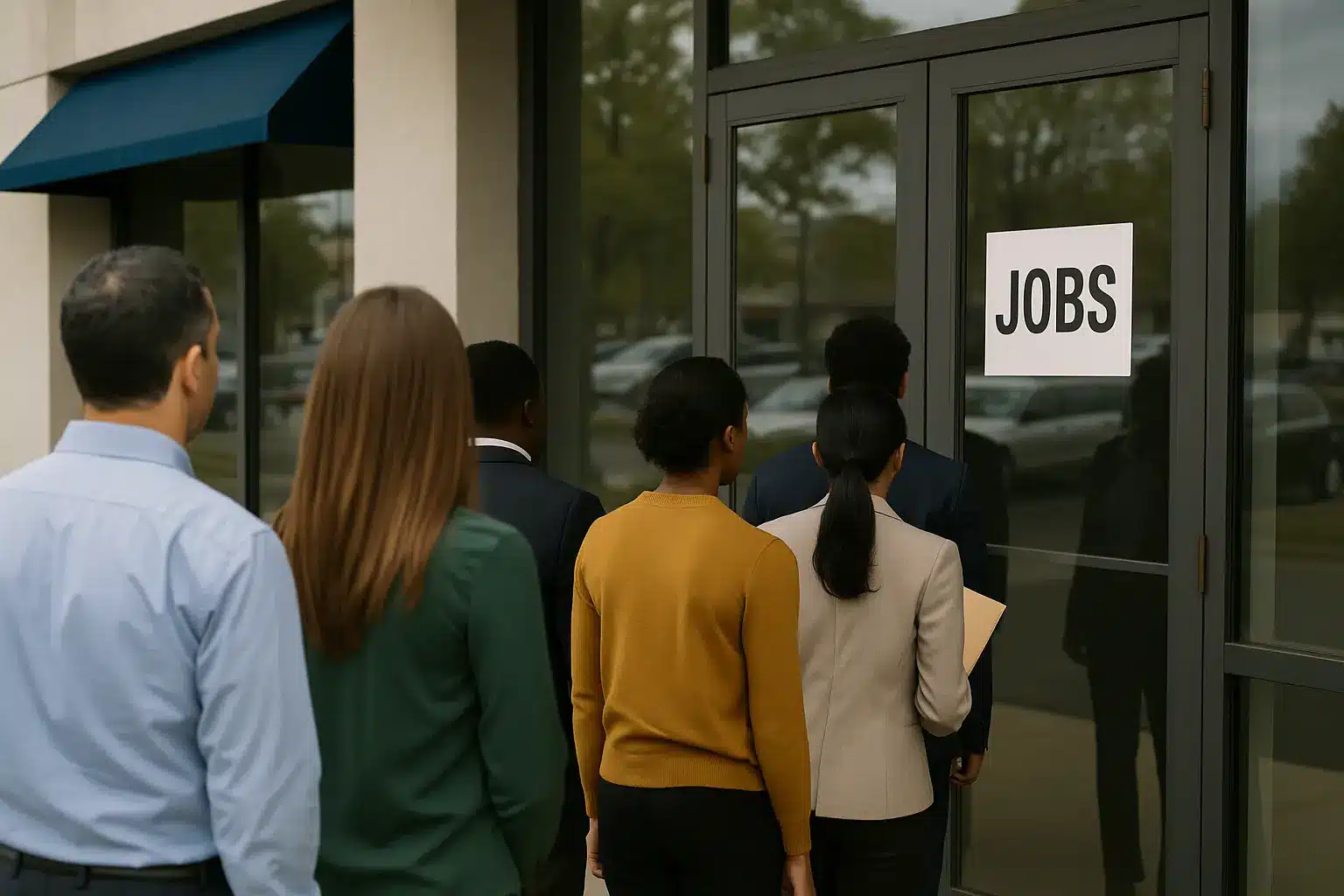The July 2025 U.S. jobs report reveals clear signs that the once-resilient labor market is losing steam. Employers added only 73,000 new jobs, far short of the 115,000 economists had expected. Even more telling are the downward revisions that erased 258,000 jobs from prior months’ totals, confirming that recent labor strength was overstated.
The unemployment rate ticked up to 4.2%, while labor force participation fell to 62.2%—its lowest point since 2022. Long-term unemployment surged by 179,000 to 1.8 million, and 275,000 new entrants to the labor market were unable to secure jobs. While annual wage growth came in at a modest 3.9%, the U6 underemployment rate—which includes discouraged and involuntary part-time workers—rose to 7.9%.
Healthcare was the only standout sector, adding 55,000 jobs, while the federal government shed 12,000 positions. Taken together, these numbers suggest declining employer confidence and point to a labor market that could be entering a period of sustained weakness.
Slowing Job Creation Raises Concerns
Hiring Falls Well Below Expectations
The July jobs report shows a hiring slowdown that is sharper than anticipated. The gain of just 73,000 jobs is the weakest monthly increase in over a year. Analysts had forecast 115,000 new positions, and the shortfall is compounded by the 258,000-job downward revision to prior months’ data.
This trend signals that employers are becoming more cautious in the face of economic uncertainties, including interest rate policy, slowing consumer demand, and geopolitical instability.
Unemployment Rate Rises as Participation Falls
Discouraged Workers Leave the Labor Force
The unemployment rate climbed to 4.2% in July. However, the drop in labor force participation to 62.2% suggests the rise in unemployment is partly masked by discouraged workers exiting the job market altogether.
A declining participation rate can make the labor market appear healthier than it is, as fewer people actively seeking work lowers the official unemployment percentage even if overall job opportunities are shrinking.
Hiring Amid a Cooling Economy?
Post jobs for free on WhatJobs and reach millions of active candidates—fast, even in a slow market.
👉 Post a Job Now →Long-Term Unemployment Is Growing
Skills Erosion and Inequality Risks
Long-term unemployment—defined as being jobless for 27 weeks or more—rose by 179,000 in July, bringing the total to 1.8 million. This trend increases the risk of skills erosion, where workers’ abilities degrade over time, making it harder for them to re-enter the workforce.
Extended unemployment also deepens economic inequality, as households without work face compounding financial and social challenges.
New Entrants Struggle to Find Work
A Difficult Start for Job Seekers
The number of people newly entering the labor force but unable to find work surged by 275,000 in July. This is a troubling sign for younger workers and recent graduates, as it reflects weak demand for entry-level hires.
When fresh job seekers can’t find positions, it can push them into underemployment or force them to leave the labor market entirely, contributing to long-term economic stagnation.
Modest Wage Growth Reflects Employer Caution
3.9% Annual Growth Below Tight-Market Levels
Wages rose at an annual rate of 3.9% in July, a pace that suggests moderate inflationary pressure but not the kind of rapid growth seen in a tight labor market. Employers appear to be balancing cost control with retention needs, hesitant to raise pay aggressively amid uncertainty about future demand.
Healthcare Emerges as a Rare Bright Spot
55,000 Jobs Added in July
The healthcare sector remains a stable source of job growth, adding 55,000 positions in July. This resilience is driven by demographic trends such as an aging population and sustained demand for medical services, which make healthcare less sensitive to short-term economic fluctuations.
Government Job Losses Add to Weakness
Federal Employment Declines
The federal government cut 12,000 jobs in July, further weighing on total employment figures. These reductions may be tied to budgetary tightening or the expiration of temporary programs, and they remove a layer of stability from the broader job market.
Conclusion: Warning Signs for the U.S. Labor Market
The July 2025 U.S. jobs report paints a picture of a labor market that is cooling more quickly than expected. Weak hiring, rising unemployment, falling participation, and growing long-term joblessness all point toward declining confidence among employers.
While healthcare continues to expand and wages are still rising modestly, these positives are outweighed by the broader slowdown. Without stronger job creation in the coming months, the U.S. could face a more entrenched employment downturn heading into 2026.
FAQ – July 2025 U.S. Jobs Report
Q1: How many jobs were added in the July 2025 U.S. jobs report?
Employers added 73,000 jobs, well below the expected 115,000.
Q2: What happened to the unemployment rate in July 2025?
The unemployment rate rose to 4.2%, while labor force participation fell to 62.2%.
Q3: Which sector showed the strongest job growth in July 2025?
Healthcare led with 55,000 new jobs, reflecting steady demand in the sector.
Q4: Why is long-term unemployment rising in July 2025?
An additional 179,000 people have been unemployed for 27 weeks or more, signaling ongoing difficulty for many in finding work.




